Raptor-Dev-Faults: Difference between revisions
mNo edit summary |
m (moved Raptor:Faults to Raptor-Dev-Faults) |
(No difference)
| |
Revision as of 17:34, 23 March 2015
New Eagle > Products Wiki > Raptor Platform > Raptor-Dev > Raptor-Dev Essential Libraries > Raptor-Dev Faults Library
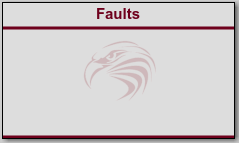
The blocks in this subsystem are used to define, configure, and access application faults.
Blocks
| Block | Description | Appearance |
|---|---|---|
OBD |
OBD Faults Library |
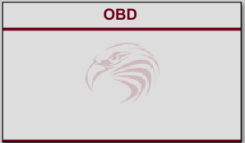
|
Fault Action |
This block defines a fault action. The fault action can be mapped to the any fault and any state. This block can be used to check if any of the faults are in a state as defined by the fault action map. |
 |
Fault Action Iterator |
This block searches through all the faults which are causing a fault action to be true. The block begins searching at the next fault after the specified previous fault. If the previous fault input is set to the null fault the search will begin at the start of the fault list. When the block reaches the end of the fault list without finding any faults causing the action to be true it will output the null fault. This can be used as a stop condition if executing this block in a while loop to iterate through a sequence of faults. |
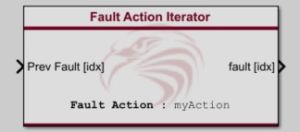 |
Fault Action Read |
This block reads the value of a fault action that has already been defined by a Fault Action block. This allows the fault action to be read in multiple locations in the model. A Raptor Fault Action block must exist in the model which defines the fault action. |
 |
Clear Faults |
This block resets the state of a fault to Not Occurred. This block can be used to reset a single fault or all faults. |
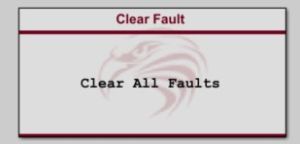 |
Fault Data Definition |
This block defines a fault data store. This will create a data store which contains a unique value for each fault. This can be used to manage data items that must be associated with each fault. |
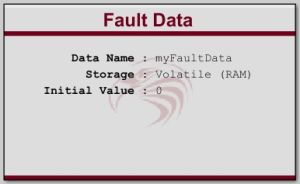 |
Fault Data Read |
This reads the value of a fault data store for a single fault. The data store must be defined with a fault data definition block. |
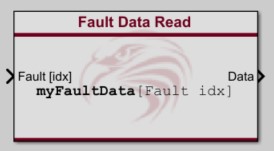 |
Fault Data Write |
This writes the value of a fault data store for a single fault. The data store must be defined with a fault data definition block. |
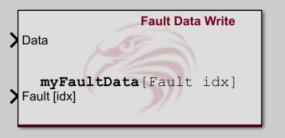 |
Fault Definition |
This block defines a fault and set its status. This block has different input, output and parameters depending on the type of fault manager selected. For more detailed information use the links below, or place the block in a model with a fault manager and enter the blocks help. |
|
Fault Handle |
This block outputs a fault index for the specified fault. |
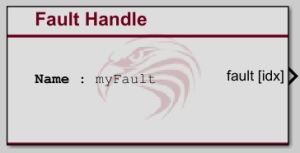 |
Fault Iterator |
Fault iterator. |
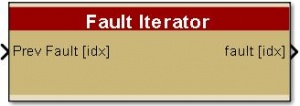 |
Fault Manager |
This block causes the fault manager to be generated. The fault manager must exist only once in the model to enable the fault blocks to be used. There are different types of fault manager which contain different features and options. Currently supported types are Standard and OBD Fault Manager. |
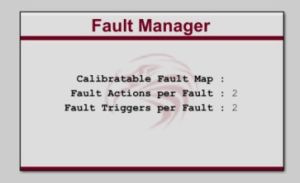 |
Fault Measurement |
This block behaves similar to the Raptor Measurement block and is used to display a value in the calibration tool. This block can be used to display the enumerated value of a fault index in the calibration tool. The proper enumeration definition will automatically be generated to convert the incoming fault index into the name of the fault. |
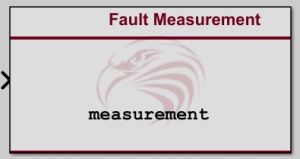 |
Null Fault |
This block outputs a null fault index. This can be useful for starting a fault iterator or comparison to the out coming index to determine the end of a search. |
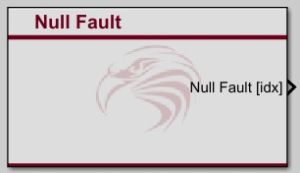 |
Fault Config |
Fault Config. |
 |
Set Fault State |
This block allows the individual states of faults to be set or cleared. |
 |
Fault State Iterator |
This block searches through all the faults which are in one of the specified states. The block begins searching at the next fault after the specified previous fault. If the previous fault input is set to the null fault the search will begin at the start of the fault list. When the block reaches the end of the fault list without finding any faults causing the action to be true it will output the null fault. This can be used as a stop condition if executing this block in a while loop to iterate through a sequence of faults. This block has different input, output and parameters depending on the type of fault manager selected. For more detailed information use the links below, or place the block in a model with a fault manager and enter the blocks help. |
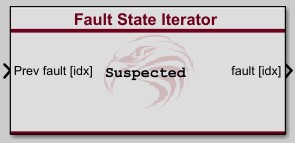 |
Fault Status |
This block outputs the status of the specified fault. This block has different input, output and parameters depending on the type of fault manager selected. For more detailed information use the links below, or place the block in a model with a fault manager and enter the blocks help. |
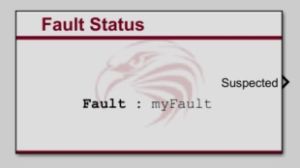 |
Fault Trigger |
This block defines a fault trigger. The fault trigger can be mapped to the any fault event (entering or leaving each fault state). This block can be used to execute code when a fault enters or leaves a particular state. For example to alert the operator when a fault becomes active. |
 |
Fault State Count |
This block counts all the faults which are in any of the specified states. |
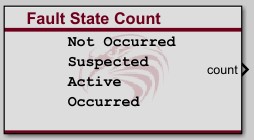 |